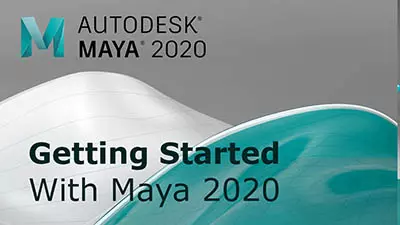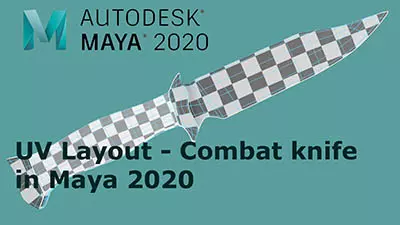Beer glass scene creation
This course contains a little bit of everything with modeling, UVing, texturing and dynamics in Maya, as well as compositing multilayered EXR's in Photoshop.
#
1
27-10-2005
, 05:52 PM
Registered User
Join Date: Oct 2005
Join Date: Oct 2005
Posts: 4
Stuck in Game Artist's Guide to Maya
Now, it instructs you to move vertices around to match the face, in front and side view. I found this somewhat difficult, considering the amount of vertices I had to work with. In the book illustration, there seem to be more horizontal subdivisions than I had in my model. Did I miss something? Or is it assumed that the reader knows how to horizontally subdivide a non-primitive polygon? If the latter is true, I would like to know what method I should use.
Here are some screenshots:
#
4
27-10-2005
, 08:00 PM
Also, earlier in the chapter, I go over many tools that are used throughout the tutorials, but are not necessarily mentioned each time they are used, due to necessary cutting for length.
But, to answer your question, using either the Split Polygon Tool (pg 17) or the Cut Faces tool (pg 66) are 2 methods of subdividing your mesh.
Hope that helps some. Good luck!
#
5
27-10-2005
, 11:05 PM
Registered User
Join Date: Oct 2005
Join Date: Oct 2005
Posts: 4
Also, a minor editorial error I noticed on page 30: In "Creating the Hilt and Grip", on step 2, it reads, "The sword in the drawing is a bit pointed." I believe you meant it to read, "The hilt in the drawing is a bit pointed." :p
I don't mean to be a nit pick, as I find the book a wonderful tutorial, and an enjoyable read. Just giving you a heads up in case there's an edition 2.

#
6
27-10-2005
, 11:36 PM
Registered User
Join Date: Aug 2004
Join Date: Aug 2004
Posts: 408
I personally also use subdivide and smooth aswell -- subdivide cuts a face in equal portions, as does smooth -- but smooth moves around the vertices to conform to the rounded-surface it BELIEVES you're attempting to make. Subdivide leaves your new faces contained in the planar surface of your original polygons.Originally posted by mtmckinley
It's true that I was not able to have each and every step in the book. For example, chapter 2 alone had over 120 images originally, but I had to cut it back to around 80 due to length concerns. The publisher actually wanted the book to be about 200 pages!
Also, earlier in the chapter, I go over many tools that are used throughout the tutorials, but are not necessarily mentioned each time they are used, due to necessary cutting for length.
But, to answer your question, using either the Split Polygon Tool (pg 17) or the Cut Faces tool (pg 66) are 2 methods of subdividing your mesh.
Hope that helps some. Good luck!
#
7
28-10-2005
, 01:12 AM
Smooth isn't something that is generally used for making game models because of the increased amount of geometry that results.
#
8
28-10-2005
, 05:15 AM
Registered User
Join Date: Aug 2004
Join Date: Aug 2004
Posts: 408
Then again I'm not experienced in character modelling like the book was designed for... rather scenery and objects. (Crates, tables, chairs, mugs, and the like) But I'm trying to branch out.
Point of saying that? I'm not sure how it will impact modelling characters... but it helps me when I want perfect edges on boxes, (or I suppose to up polycounts for normal maps or something... though I never needed to do that).
Last edited by Phopojijo; 28-10-2005 at 05:20 AM.
Posting Rules Forum Rules
Similar Threads
trouble opening maya scene
by jooleyinboots in forum Maya Technical Issues replies 3 on 07-10-2022
Blender guide for Maya users ( Maya controlls emulation file included)
by mahri726 in forum Maya Basics & Newbie Lounge replies 0 on 05-04-2014
Maya Doesn't Startup Properly - Just Script Editor
by threedsnack in forum Maya Technical Issues replies 1 on 04-02-2008
Maya Game Art Work
by mattnowaczewski in forum Maya Basics & Newbie Lounge replies 1 on 04-10-2005
questions about game design/setting up maya
by vion in forum Maya Basics & Newbie Lounge replies 7 on 02-01-2005
Topics
New tutorial - Create tileable textures from photos. Photoshop to Alchemist to Maya 2
By David
Site News & Announcements
5
Free Courses
Full Courses
VFX News
How computer animation was used 30 years ago to make a Roger Rabbit short
On 2022-07-18 14:30:13
Sneak peek at Houdini 19.5
On 2022-07-18 14:17:59
VFX Breakdown The Man Who Fell To Earth
On 2022-07-15 13:14:36
Resident Evil - Teaser Trailer
On 2022-05-13 13:52:25
New cloud modeling nodes for Bifrost
On 2022-05-02 20:24:13
MPC Showreel 2022
On 2022-04-13 16:02:13








